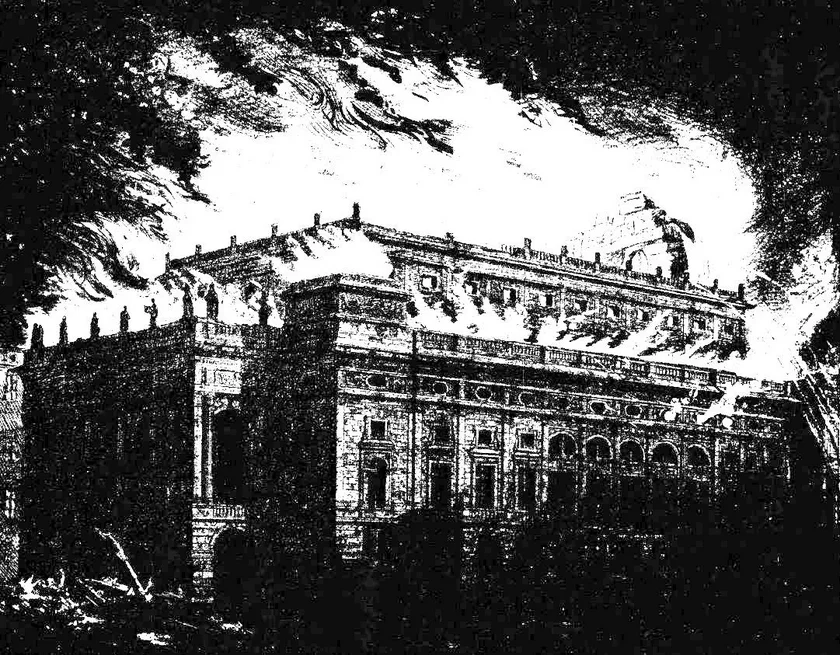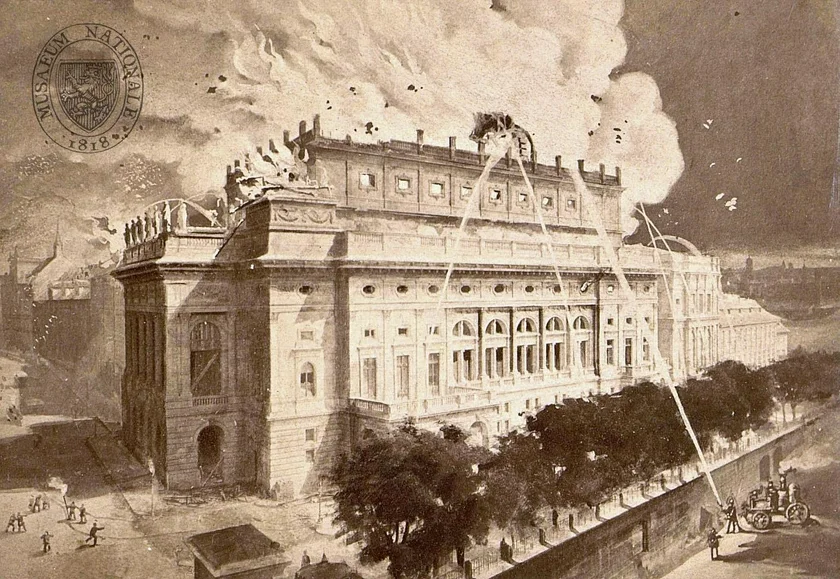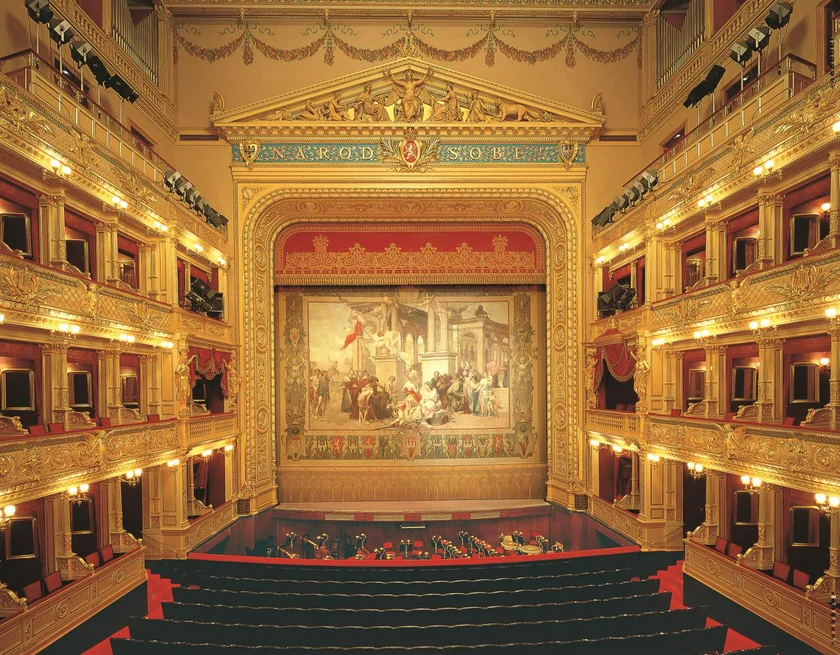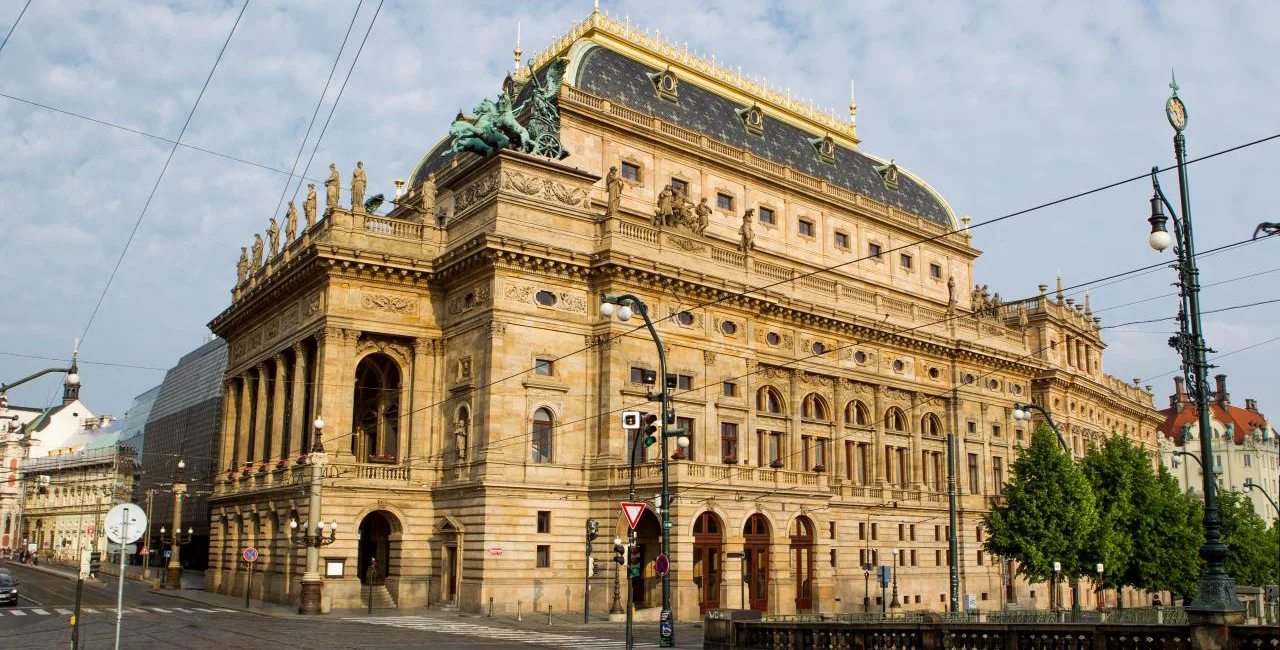The Czech National Theatre suffered a catastrophic fire on Aug. 12, 1881, just two months and a day after it opened. The fire destroyed the copper dome, the auditorium, and stage. The event is still remembered as a national tragedy, though it also helped to bring people together as they resolved to quickly rebuild the structure.
The National Theatre and the Prague Fire Brigade will commemorate the anniversary today (Aug. 12) at 5 pm, the same time as when the fire broke out. Firefighters will arrive on the Vltava embankment and demonstrate what extinguishing the roof of the National Theater looks like.
The National Theater opened on June 11, 1881, on the occasion of a visit by Rudolf, the crown prince of Austria, with his new wife Princess Stéphanie of Belgium. Bedřich Smetana’s opera Libuše, written especially for the theater, was performed for the first time. This is the same Rudolf that lent his name to the Rudolfinum theater, which opened in 1885.

The National Theatre wasn’t fully completed yet, though. Work continued into the summer, and on Aug. 12 workers installed lightning rods on the roof. The fire wasn’t caused by lightning, but by coal from portable stove that had been carelessly disposed of after the workers ate their lunch.
Once the smoke was seen, firefighters responded quickly. But it was impossible to get the flames under control until the next morning. They managed to save the vestibule, foyer, archive. The neighboring Provisional Theatre escaped without major damage.
The first building had been made with funds from a public collection. At the time, Bohemia and Moravia were part of the Austro-Hungarian Empire. The movement to create a National Theatre that would showcase Czech composers and authors helped to solidify the growing nationalist sentiment.

The idea of a National Theatre was first brought up in 1844, and permission to build it was granted a year later. A society to raise money for construction formed in 1851, and soon raised money to buy land formerly used by a salt factory. A temporary theater, known as the Provisional Theatre, was built first.
The cornerstone of the permanent theater was laid in 1868, and the building reached its full height by 1875. The roof was in place by 1877. Planning for the elaborate interior decor didn’t begin until 1873.
A second collection to rebuild the theater took place, and quickly raised enough money. A new chief architect was brought in, and the design of the theater was altered slightly. Among the changes, Provisional Theatre was incorporated into the now larger National Theatre. The auditorium was altered to improve the view to the stage.

The second version of the National Theatre ceremoniously opened on Nov. 18,1883, again with Smetana’s Libuše. The National Theatre currently operates four venues. To avoid confusion, the main venue is now called the Historical Building. There is also the glass-covered New Stage, located next to the Historical Building, as well as the Estates Theatre and State Opera.
Over the summer, guided tours of the National Theatre buildings are available. The next tour of the Historical Building in English is on Aug. 22. More information is on the National Theatre website.












 Reading time: 2 minutes
Reading time: 2 minutes 























